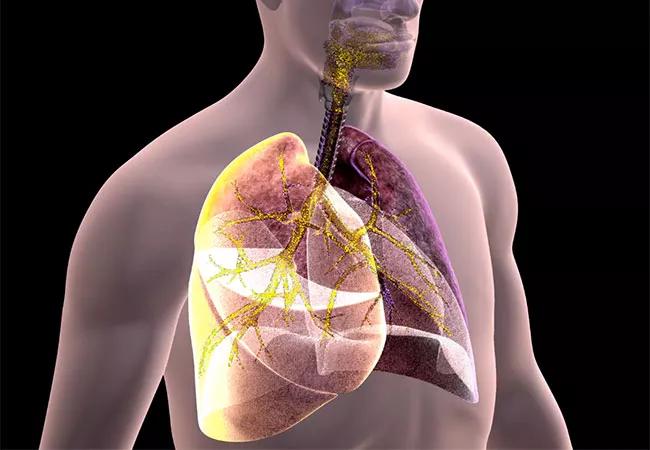What clinicians need to know

By Mark A. Aronica, MD and David Lang, MD
Advertisement
Cleveland Clinic is a non-profit academic medical center. Advertising on our site helps support our mission. We do not endorse non-Cleveland Clinic products or services. Policy
There has been concern expressed both by patients and caregivers related to asthma management and the implications of providing oral steroids during an asthma exacerbation during this pandemic. Some of the concern is based on data from the MERS-CoV outbreak in which steroids seemed to worsen the disease process in patients already in the ICU setting with MERS-CoV. It is important to note that even in this select population, mortality rates did not differ by corticosteroid use when adjusted by time-varying confounders.1
More recent data from Wuhan, China, the epicenter of the COVID-19 outbreak, suggests that steroids have minimal impact on the disease process. A small study in patients with the COVID-19 infection in patients taking chronic steroids for other indications and without pneumonia/acute respiratory distress syndrome (ARDS) indicated no benefit/no harm. There was a small signal suggesting patients with chronic hepatitis B may have had a delayed clearance of the virus.2
In contrast, in patients with ARDS related to COVID-19 data have been mixed, with one early study suggesting no benefit but the potential for harm.3 However, a recent report in JAMA indicated that patients who developed ARDS were older, had more comorbidities, were less likely to be treated with anti-virals, and more likely to have been treated with methylprednisolone at time of admission. Patients who received methylprednisolone treatment were much more likely to develop ARDS likely owing to confounding by indication; specifically, sicker patients were more likely to be given methylprednisolone. However, administration of methylprednisolone appeared to reduce the risk of death in patients with ARDS.4 (Note: in contrast to the Lancet guidelines reported above.)
Advertisement
It is important to note that these are sick, hospitalized patients with known disease.
Interestingly, the epidemiologic data seems to suggest that patients with asthma may have some protection against developing severe disease. Epidemiologic data from Wuhan suggests patients with asthma and allergies as well as COPD were under-represented in patients hospitalized with confirmed COVID-19 infection.5 In a larger study with over 1,000 patients, they concluded that the “new 2019-nCoV epidemic is mainly associated with respiratory disease and few extrapulmonary signs. However, there is a low rate of associated pre-existing respiratory comorbidities.” 6,7
Independent of the epidemiologic data above, an additional concern may be expressed regarding the risk of the virus causing an asthma exacerbation. Neither SARS-CoV and MERS-CoV have been associated with asthma exacerbations, however, there are non-pandemic coronaviruses that circulate that have been reported to cause asthma exacerbations.
Inhaled corticosteroids are the mainstay of therapy in patients with persistent asthma, and oral corticosteroids are indicated and can be potentially lifesaving in patients with asthma exacerbations and often prevent patients from seeking ED or outpatient visits. Limiting ED or outpatient clinic exposure is a priority during the current pandemic.
The most common symptoms of COVID-19 infection include fever (88%), fatigue (38%), dry cough (67%), shortness of breath (18%) and myalgias (15%).7 The overwhelming majority of asthmatics who experience an exacerbation will not have fever, fatigue or myalgias.
Advertisement
Based on the above available information in our asthma patients reassurance can be provided to maintain their current asthma regimen — including regular use of inhaled steroids. In patients who present with their “typical” asthma exacerbation symptoms and do not have fever, anorexia or myalgias to suggest possible COVID-19, providing them the usual standard of care for their asthma is supported and warranted to prevent worsening of exacerbation leading to ED visits. Finally, if a patient with asthma and COVID-19 is admitted to the hospital, the standard of care should still be maintained for their underlying disease process.
Dr. Lang is Chairman of the Department of Allergy and Clinical Immunology in the Respiratory Institute at Cleveland Clinic.
Dr. Aronica is Vice Chair of the Department of Allergy and Clinical Immunology. He is also Staff in the Department of Inflammation and Immunity in Lerner Research Institute.
Advertisement
Advertisement

Patients report improved sense of smell and taste

Clinicians who are accustomed to uncertainty can do well by patients

Unique skin changes can occur after infection or vaccine

Cleveland Clinic analysis suggests that obtaining care for the virus might reveal a previously undiagnosed condition

As the pandemic evolves, rheumatologists must continue to be mindful of most vulnerable patients

Early results suggest positive outcomes from COVID-19 PrEP treatment

Could the virus have caused the condition or triggered previously undiagnosed disease?

Five categories of cutaneous abnormalities are associated with COVID-19